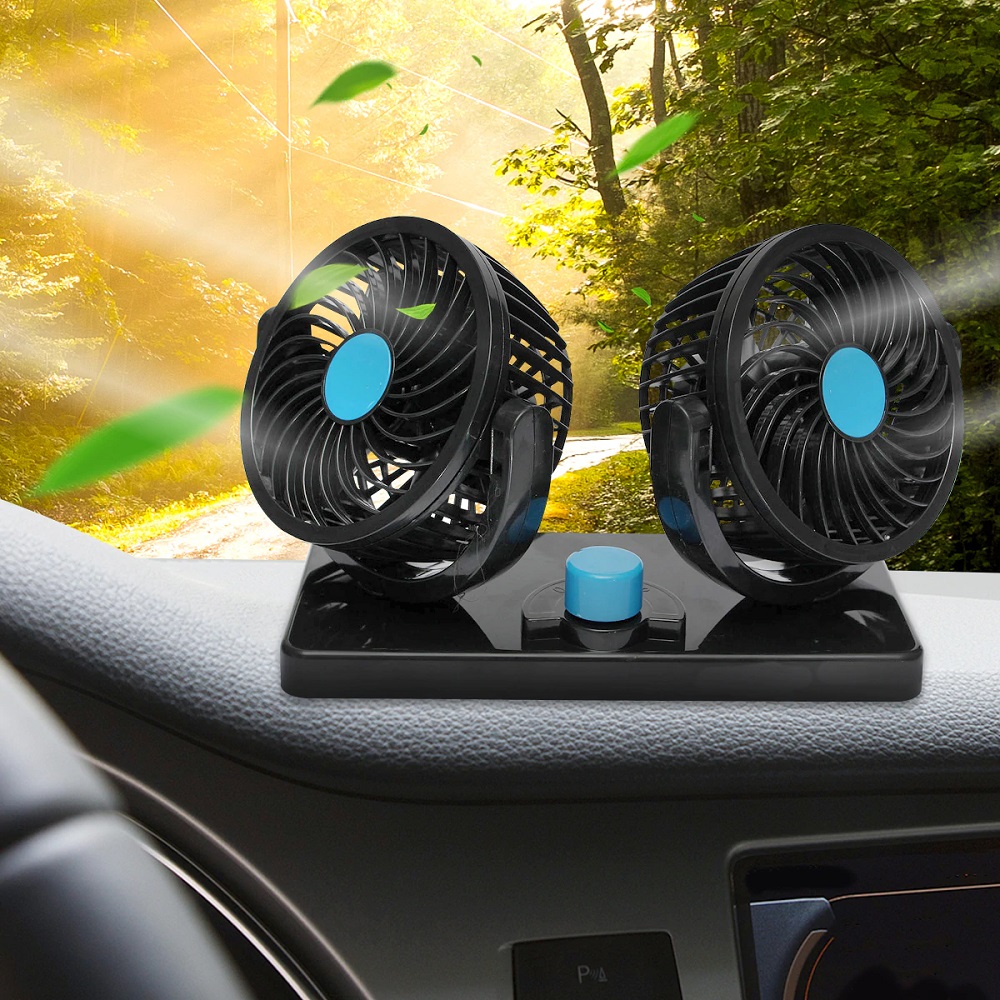Automobile air conditioning system is a kind of a system that helps to cool the air in a vehicle, get rid of moisture and extraneous odours. Smooth operation of air conditioning or climate control makes for a comfortable ride in hot weather. Otherwise, you may find it a good idea to use portable air conditioners that operate from a cigarette lighter. Stay tuned and you will get to know the advantages and disadvantages of these devices.
The beginning
When it got hot, the drivers took a table fan. A compact home appliance with blades which looks like a plain structure of electric motor, impeller, switch and wire was connected to the vehicle network 12V and blew air inside the car. However, this air did not cool down since it remained inside the car. However, that was only a portion of air initially caught in the car that circulated. There was a slight effect, however, drivers felt no relief. However, an idea of inventing a compact device that will give that long-awaited feeling of chill was never far from the minds of manufacturers and drivers. This gave rise to the so-called “manual air conditioner” that was easy to connect to the cigarette lighter and enjoy the air stream. Even today there are cars with no A/C, thus, a portable automobile conditioner is a very popular device.
Energy consumption
An air conditioner operating from the vehicle network is a monolithic plastic block with the system parts inside. According to the developers, this configuration helps to avoid difficulties while mounting and provide complete energy independence of the device from the car engine. It means that an air conditioner may operate from a cigarette lighter when the engine is shut down (however, most air conditioners fail to do that).
The manufacturers of air conditioners operating from a cigarette lighter say that the principle of their devices is based on that of popular split systems. The air cools down through a coolant that circulates in the system and evaporates when heated. Thus, the coolant cools down the free air and then condenses again to liquid medium and the process cycles. To make heat absorption faster, heat exchangers are blown with the fans. As you may see, designers of such conditioners did not invent a thing. They merely used a classical car conditioner pattern by reducing it in proportion and using pumps and fans of a smaller capacity which require only car-system voltage.
Advantages of portable air conditioner

Disadvantages
These are regular cleaning, a risk of fungus emergence as well as a smaller capacity as compared to a stationary air conditioner. The latter dramatically affects total capacity of the car — all drivers noticed that the power unit capacity decreases notably after you switch on the air conditioner. The decrease is seen immediately since idle speed falls and the car starts to accelerate slower. Thus, such a decrease is especially notable on compact cars. The average capacity of a plain city compact car is about 100 hp. When you switch on the air conditioner, the capacity decreases by 5 to 7 horsepower, and in traffic jams or when the weather is extremely hot, even greater. Thus, when the weather is hot, the temperature in a stationary vehicle near a windshield may reach 60-80 °C. Just imagine how much energy a climate control unit requires to cool off the car when the car starts moving.
In the event, the capacity of the car conditioner fed by a cigarette lighter cannot exceed 250 Watt. Otherwise, electric mains of the vehicle fail to handle the load which results in fuse box blowing.

In fact, portable air conditioners operating from a cigarette lighter are the same “old” fans that look up-to-date and cost you more. If you want to significantly decrease the temperature inside the car, choose a stationary split air conditioner (climate control). If you are going on a trip, don’t forget your International Driving Permit. Otherwise, apply for one on our website. This is as easy as ABC.

Published May 27, 2019 • 3m to read






